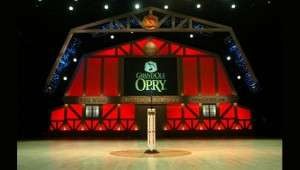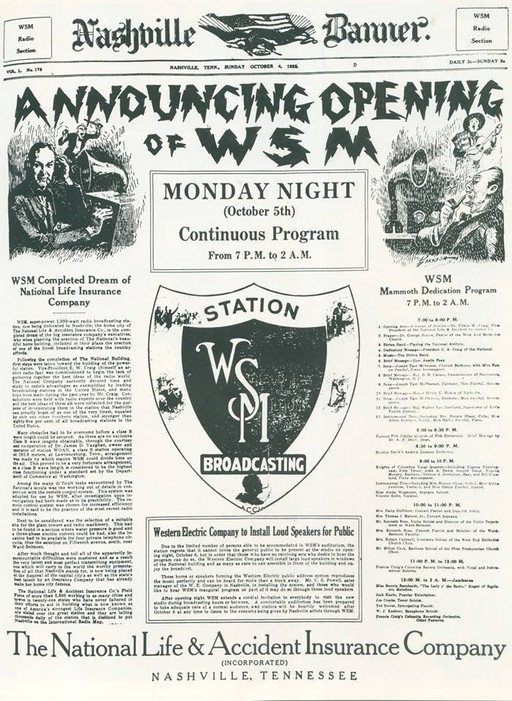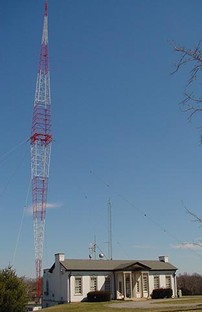WSM Studio
Introduction
Text-to-speech Audio
Images
WSM gave rise to what would eventually become the Grand Ole Opry.

The Nashville Banner, Oct 4, 1925

In the 1930s, WSM built the largest radio tower in the nation. During World War II, the War Department created a plan to use this tower as a back-up plan in case they lost contact with submarines.

Backstory and Context
Text-to-speech Audio
At its conception, WSM boasted one thousand watts and was stronger than 85 percent of stations nationwide; in the South, only one station could be considered its equal. WSM transmitted on both coasts because early radio broadcast signals were unlimited. The station’s early programming consisted mainly of classical and popular tunes until radio announcer George Hay experimentally featured Uncle Jimmy Thompson playing the fiddle. He found an enthusiastic following for such “old-time music” and continued to develop the “hillbilly” theme. The Grand Ole Opry began in 1925 as “The WSM Barn Dance” which played every Saturday night.
In 1941, WSM became the first commercial broadcaster to receive an FM broadcasting license from the Federal Communications Commission. At that time, the station offered 70 hours of weekly broadcasting. However, the FCC almost delayed WSM's license because other stations in the first group of FM stations to broadcast weren’t ready to transmit on FM frequencies. WSM engineers built their own twenty thousand watt transmitter, helping WSM to meet the FCC’s deadline and to reach a large audience. Live audiences soon outgrew the fifth-floor studio of the National Life Building, causing the show to move to the Hillsboro Theater. Over its lifetime, the show moved several times, once to the Ryman Auditorium, which later became known as the Grand Ole Opry House. In 1974, WSM finally settled down and called Opryland home.
WSM proved a sound investment that benefited National Life Insurance and the Nashville community. The station helped increase life insurance sales to rural customers who listened to the Grand Ole Opry through a new premium payment plan based on smaller, more frequent payments. The station and company contributed to World War II efforts. WSM brought Nashville the first television broadcast in 1950. WSM helped develop the Country Music Association, promoting the industry. Today, WSM listeners can still hear The Grand Ole Opry on Friday and Saturday nights.
Sources
"FM Broadcasting History - Various Articles." Accessed November 30, 2015. http://jeff560.tripod.com/fm4.html.
"WSM-FM." World Heritage Encyclopedia. Accessed November 30, 2015. http://www.worldlibrary.org/articles/wsm-fm.
